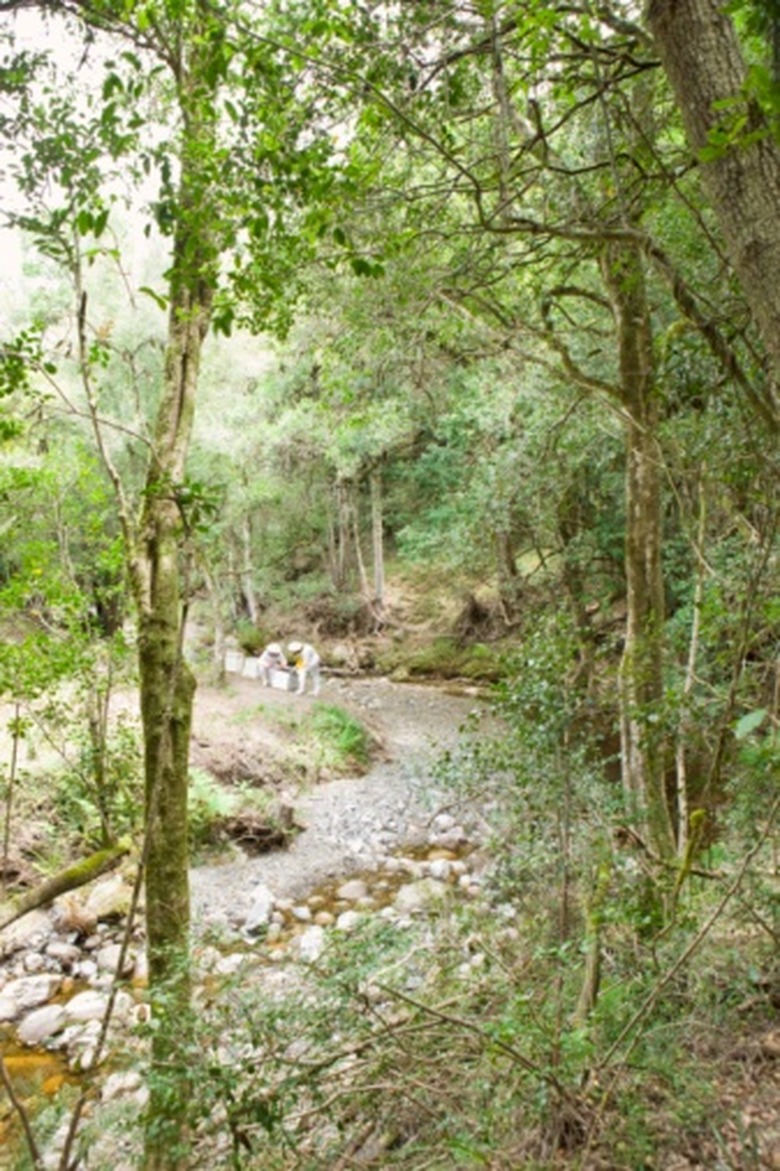The Effects Of Water Pollution On Plant Growth
Water can become polluted by a number of sources, ranging from sewage treatment plants and factories to mining activities, paved roads and agricultural runoff, according to the U.S. Environmental Protection Agency. Water pollution has a wide variety of effects on plant life and on the environment in general. Pollution in water not only harms plant growth but also allows plants to absorb dangerous chemicals from the water and pass them on to animals that rely on them for survival. Plants also pass on these pollutants to humans who consume them.
Foliage and Bark Damage
Foliage and Bark Damage
Acid rain contains sulfuric and nitric acid, which can damage tree leaves and bark and hurt the fine root hairs of many plants. Plants need these fine root hairs to absorb water, according to Patchogue-Medford High School in New York. Acid rain is the result of the mixing of compounds, such as sulfur dioxide and nitrogen oxides with oxygen, water and other chemicals in the atmosphere. Many of the compounds that cause acid rain stem from power plants that burn fossil fuels, such as coal, as well as exhaust from buses, trucks and cars.
Photosynthesis Issues
Photosynthesis Issues
Water pollution from substances can disrupt photosynthesis in aquatic plants, according to Tropical-Rainforest-Animals.com. Photosynthesis is the process in which plants use the energy from sunlight to produce sugar, or glucose, by converting carbon dioxide into carbohydrates. However, when water is polluted, the capacity of water to dissolve gases such as carbon dioxide is negatively affected, reports TutorVista.com. Because plants that grow in water or in water-logged soil — also called hydrophytes — depend on photosynthesis for their survival, any interference in the photosynthetic process can kill them.
Soil Problems
Soil Problems
Polluted water in the ground actually washes the essential nutrients plants need out of the soil. Water pollution makes the soil acidic and negatively affects the solubility of nutrient ions, such as iron, magnesium, potassium and calcium ions. As a result, water removes these nutrients more quickly from the soil and sends them into streams and lakes, according to Cornell University in New York. Calcium and magnesium in particular are critical for proper plant growth. Iron helps plants to create the pigment chlorophyll — which is necessary for food formation — while potassium helps plants to use water. Without these nutrients, plants become more susceptible to drought, fungal infections and insects. Water pollution also leaves large amounts of aluminum in the soil, which can be harmful to plants.
Cite This Article
MLA
King, YaShekia. "The Effects Of Water Pollution On Plant Growth" sciencing.com, https://www.sciencing.com/the-effects-of-water-pollution-on-plant-growth-12423700/. 21 July 2017.
APA
King, YaShekia. (2017, July 21). The Effects Of Water Pollution On Plant Growth. sciencing.com. Retrieved from https://www.sciencing.com/the-effects-of-water-pollution-on-plant-growth-12423700/
Chicago
King, YaShekia. The Effects Of Water Pollution On Plant Growth last modified August 30, 2022. https://www.sciencing.com/the-effects-of-water-pollution-on-plant-growth-12423700/
